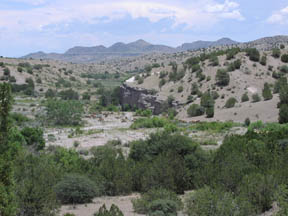The rich and complex interactions between human ecology and landscapes encompass flows, materials, energy, and information, human decision making, and the real world contexts of human systems co-constructed by cultural and natural processes. These interactions, including the impacts of human activities on ancient landscapes, are the focus on much archaeological research and graduate training at ASU, helping link the human prehistory with present-day ecological issues. Active research employing these approaches span Hominid foragers through urban civilizations, and deal with topics such as the evolution of modern humans, diet and disease, the spread of agriculture, and the rise and collapse of complex societies.
Notable projects that center on human ecology and landscapes include: Michael Barton’s biocomplexity project to model long-term landuse-landscape interactions in the ancient Mediterranean, Geoff Clark’s research on Pleistocene hunter-gatherer adaptations in Jordan, Steven Falconer’s study of the evolution of rural landscapes in Jordan and Cyprus, Curtis Marean’s Hominid project on reconstructing the paleoecological context of human evolution in southern Africa, Ben Nelson’s work on changing pre-Columbian agricultural landscapes of northern Mexico, Margaret Nelson’s biocomplexity project on social and ecological resilience in the American Southwest and Mexico, and Katherine Spielmann’s research on the lasting impacts of prehistoric farming on modern landscapes of the desert Southwest. Additional archaeology faculty whose research includes an important focus on ecology and landscapes include David Abbott, Jane Buikstra, Patricia Fall (School of Geographical Sciences), Michelle Hegmon, and Barbara Stark.
© 2007, School of Human Evolution & Social Change, ASU (revised 9/4/2007)